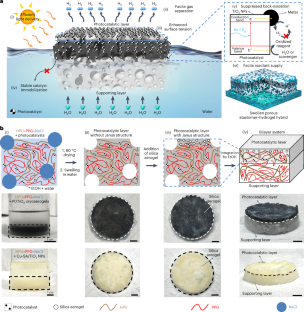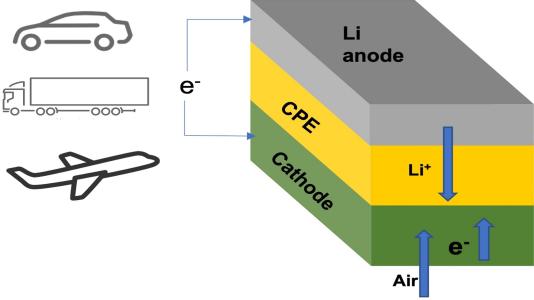ハイドロゲルナノコンポジットからなる新しいタイプの浮遊型光触媒プラットフォームは、プラスチック廃棄物を用いても、水素発生反応を効率的に進行させることができる A new type of floatable photocatalytic platform composed of hydrogel nanocomposites efficiently proceeds hydrogen evolution reaction, even by using plastic wastes
2023-04-28 韓国基礎科学研究院(IBS)
この新しいプラットフォームは、可撓性ハイドロゲルに光触媒を内包することで水上に浮かせることができ、水素発生の効率が向上する。水素の生成後、このプラットフォームは水から取り出される必要がなく、水素が空気中に拡散することで逆酸化反応が回避され、反応収率が高く維持される。
また、プラットフォームは、広範な光触媒反応に応用可能であり、キム教授は、「提案されたプラットフォームは、ポリエチレンテレフタレートボトルなどの家庭ごみを溶解する溶液から水素を生成することさえできます。」と述べており、環境に優しい社会の実現に貢献する可能性がある。
<関連情報>
- https://www.ibs.re.kr/cop/bbs/BBSMSTR_000000000738/selectBoardArticle.do?nttId=22724&pageIndex=1&searchCnd=&searchWrd=
- https://www.nature.com/articles/s41565-023-01385-4
大規模太陽熱水素製造のための浮遊性光触媒ヒドロゲル・ナノコンポジット Floatable photocatalytic hydrogel nanocomposites for large-scale solar hydrogen production
Wang Hee Lee,Chan Woo Lee,Gi Doo Cha,Byoung-Hoon Lee,Jae Hwan Jeong,Hyunseo Park,Junhyeok Heo,Megalamane S. Bootharaju,Sung-Hyuk Sunwoo,Jeong Hyun Kim,Kyung Hyun Ahn,Dae-Hyeong Kim & Taeghwan Hyeon
Nature Nanotechnology :Published27 April 2023
DOIhttps://doi.org/10.1038/s41565-023-01385-4

Abstract
Storing solar energy in chemical bonds aided by heterogeneous photocatalysis is desirable for sustainable energy conversion. Despite recent progress in designing highly active photocatalysts, inefficient solar energy and mass transfer, the instability of catalysts and reverse reactions impede their practical large-scale applications. Here we tackle these challenges by designing a floatable photocatalytic platform constructed from porous elastomer–hydrogel nanocomposites. The nanocomposites at the air–water interface feature efficient light delivery, facile supply of water and instantaneous gas separation. Consequently, a high hydrogen evolution rate of 163 mmol h–1 m–2 can be achieved using Pt/TiO2 cryoaerogel, even without forced convection. When fabricated in an area of 1 m2 and incorporated with economically feasible single-atom Cu/TiO2 photocatalysts, the nanocomposites produce 79.2 ml of hydrogen per day under natural sunlight. Furthermore, long-term stable hydrogen production in seawater and highly turbid water and photoreforming of polyethylene terephthalate demonstrate the potential of the nanocomposites as a commercially viable photocatalytic system.



